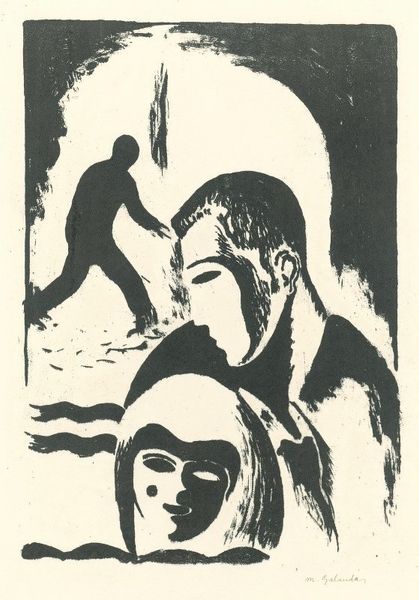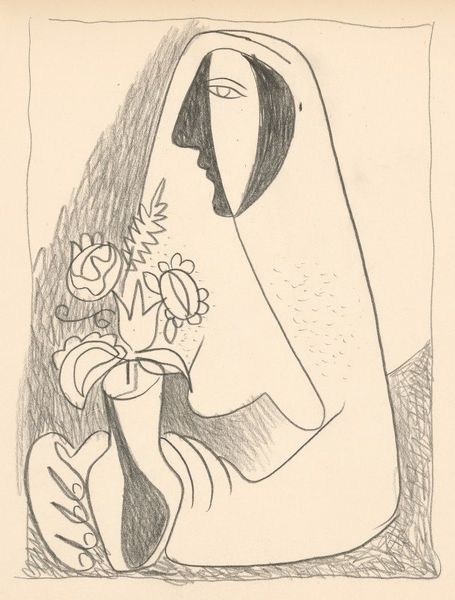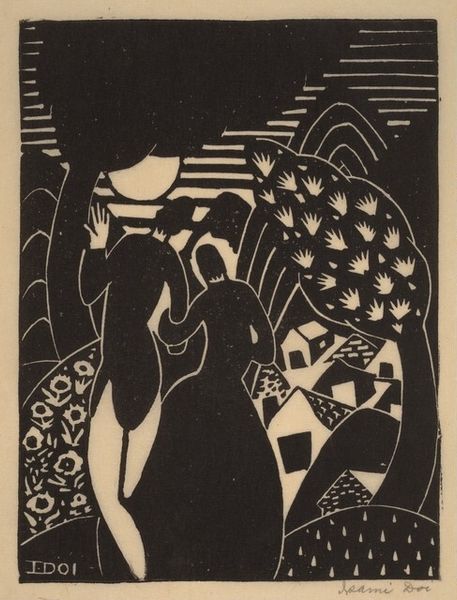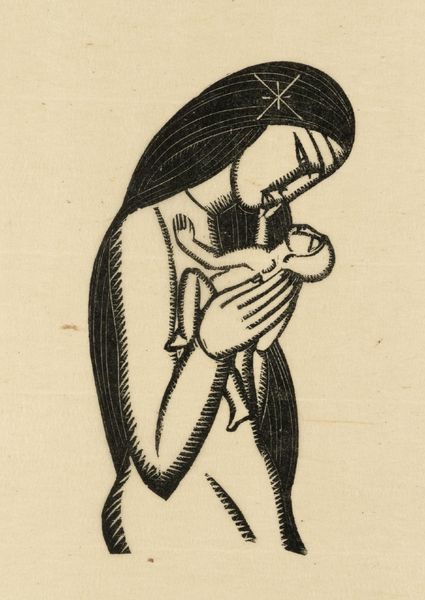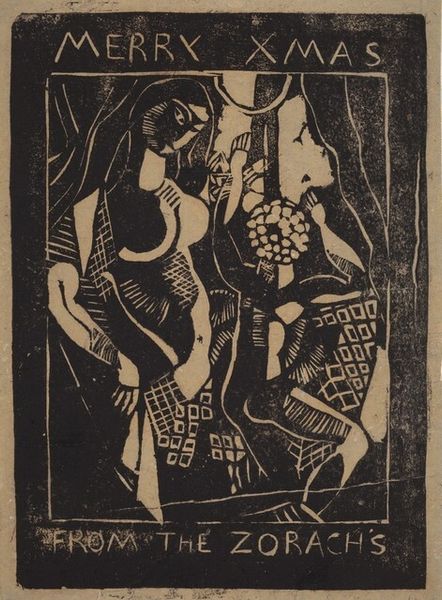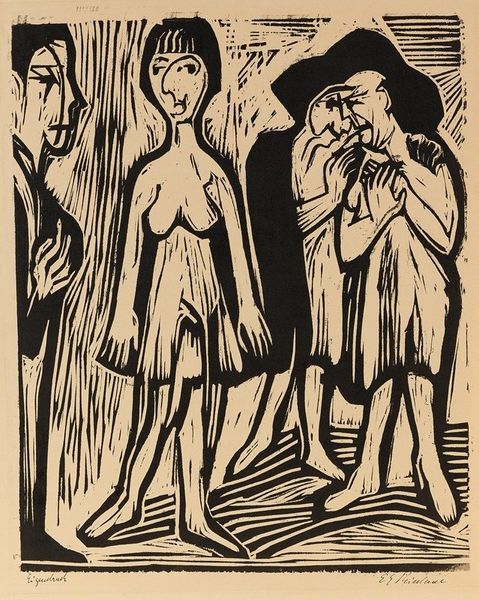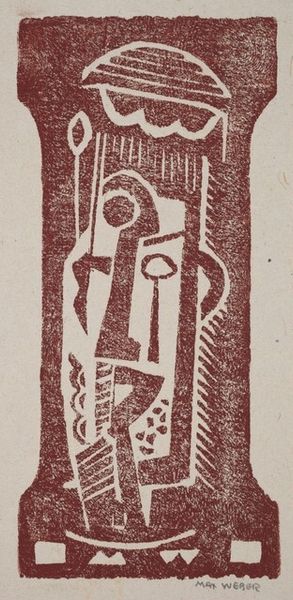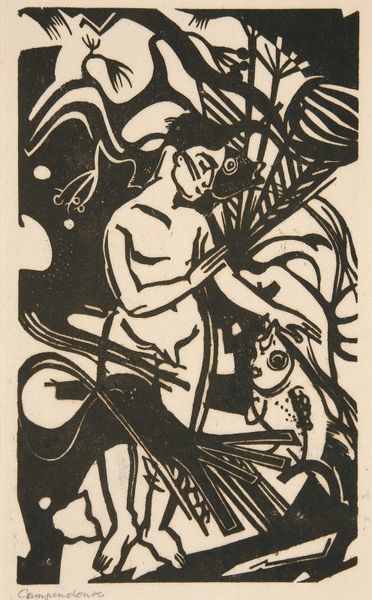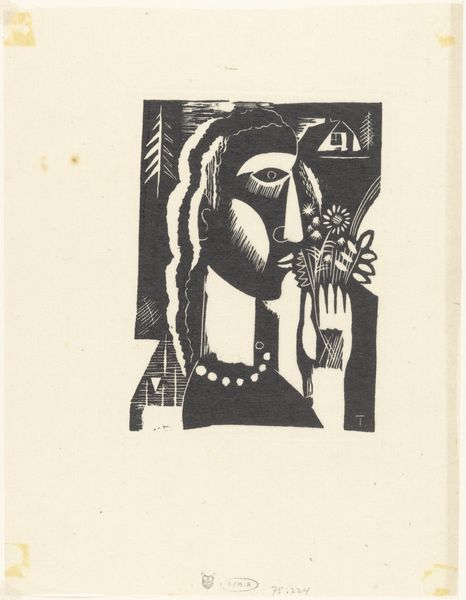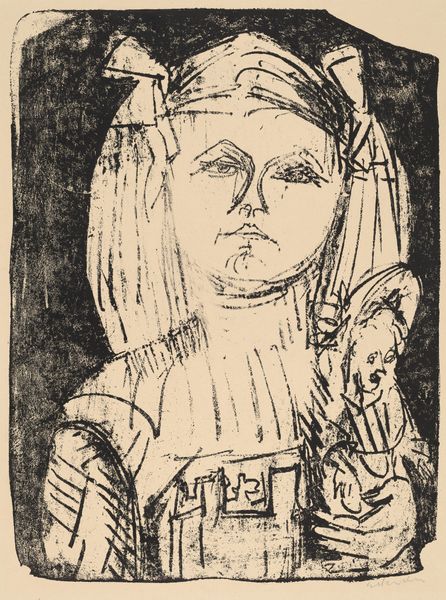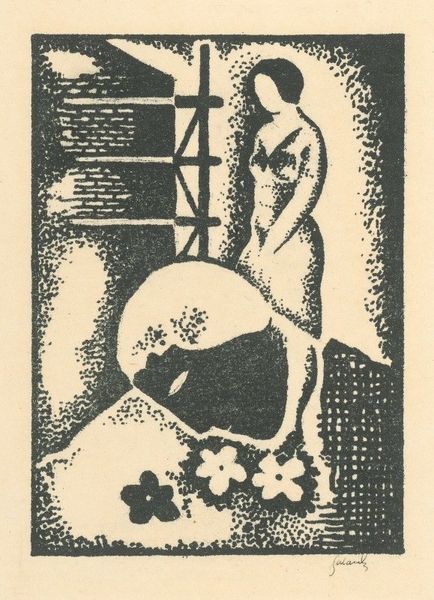
drawing, woodcut
#
portrait
#
drawing
#
caricature
#
german-expressionism
#
figuration
#
expressionism
#
woodcut
#
portrait drawing
Copyright: Public Domain: Artvee
Curator: So immediate. Gut-wrenching, almost. That's my first take on this Kirchner woodcut. It grabs you with its raw emotional honesty. Editor: And a stark honesty it is. We are looking at “Erinnerung,” or “Memory,” from 1926. Kirchner, as you know, a pivotal figure in German Expressionism, worked with woodcuts, drawing and printmaking. Here, in a powerfully economical fashion, he's laid bare what memory feels like—oppressive and inescapable. Curator: Oppressive, yes. Absolutely. I feel a sort of smothering sorrow coming off this. You've got this monumental face looming over what looks like a tiny, broken figure, head in his hands. Talk about a visual representation of being haunted! Editor: The woman's face... it has this almost icon-like quality, doesn’t it? Large and ever-present. It reminds me of images of saints or madonnas, figures imbued with great weight. It contrasts, of course, to the huddled figure beneath her gaze. That contrast feels key. It makes you wonder: Is it a specific memory, or memory itself, as an archetype, that's crushing him? The woodcut's style is fascinating too— such dramatic, bold cuts. It evokes an almost brutal simplicity, magnifying the impact of the theme. Curator: You're right about the contrast! I hadn't quite put my finger on why this image resonates so profoundly, but that's it. The woman's features seem stylized, almost distant. Is she judging him? And he’s utterly exposed. His posture speaks volumes. The simple stark black and white reinforces the feeling of rawness, with no softening shades, or any colors in-between. This feels quite personal to me; as if the artist poured every drop of feeling into each carved line. Editor: Precisely, Expressionism stripped bare— the personal, intensified and made universal through symbolism and a radical reduction of form. But, perhaps the most potent detail is the way the woman's gaze meets... nothing. She is seeing without connecting, just as memory observes and plays back without necessarily offering comfort or resolution. She exists more as a phantom here, a mental construction haunting the conscious of our poor figure here. Curator: Ghost, Phantom— it's all here. This is no simple portrait, then, it's a landscape of grief etched in wood. Editor: Absolutely, and Kirchner’s incisive technique serves to carve directly into our emotional landscape as well.
Comments
No comments
Be the first to comment and join the conversation on the ultimate creative platform.
